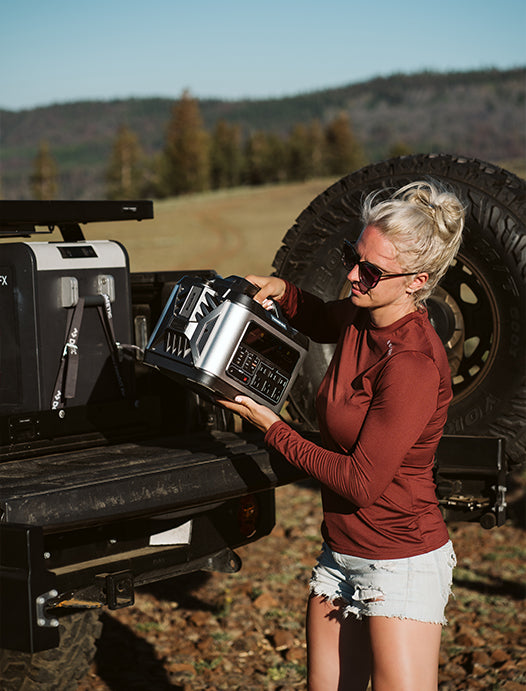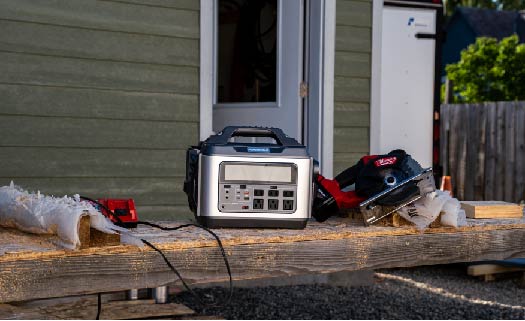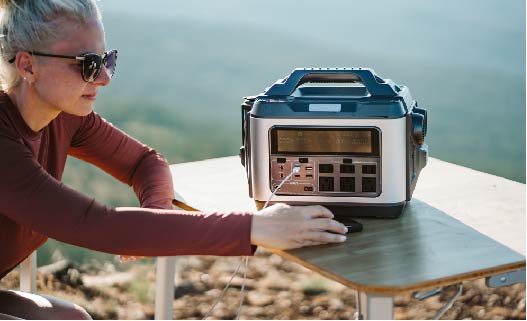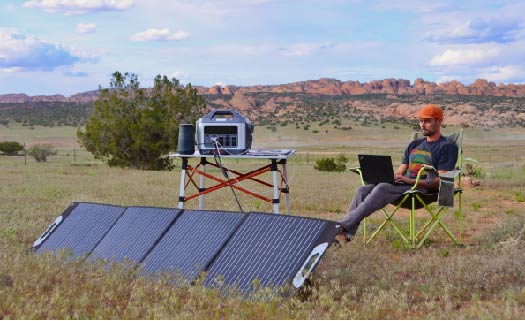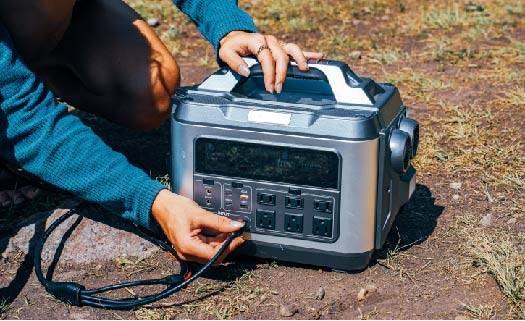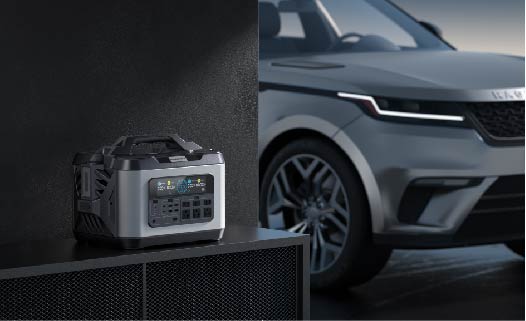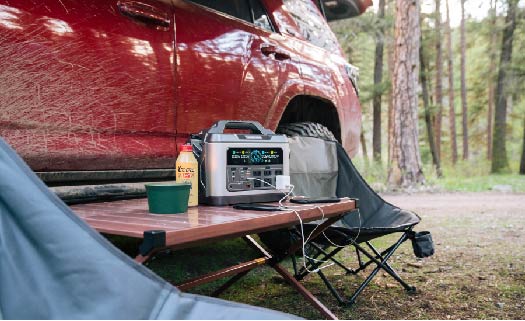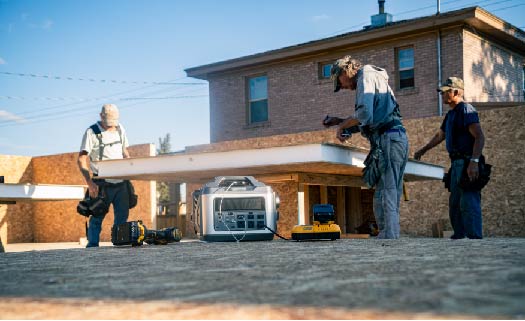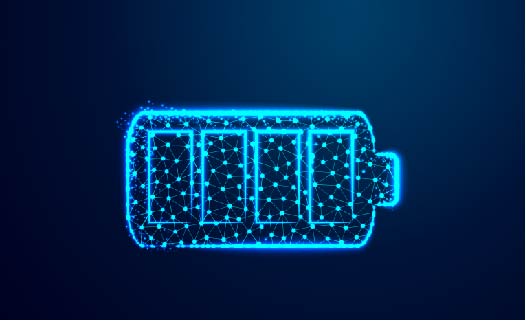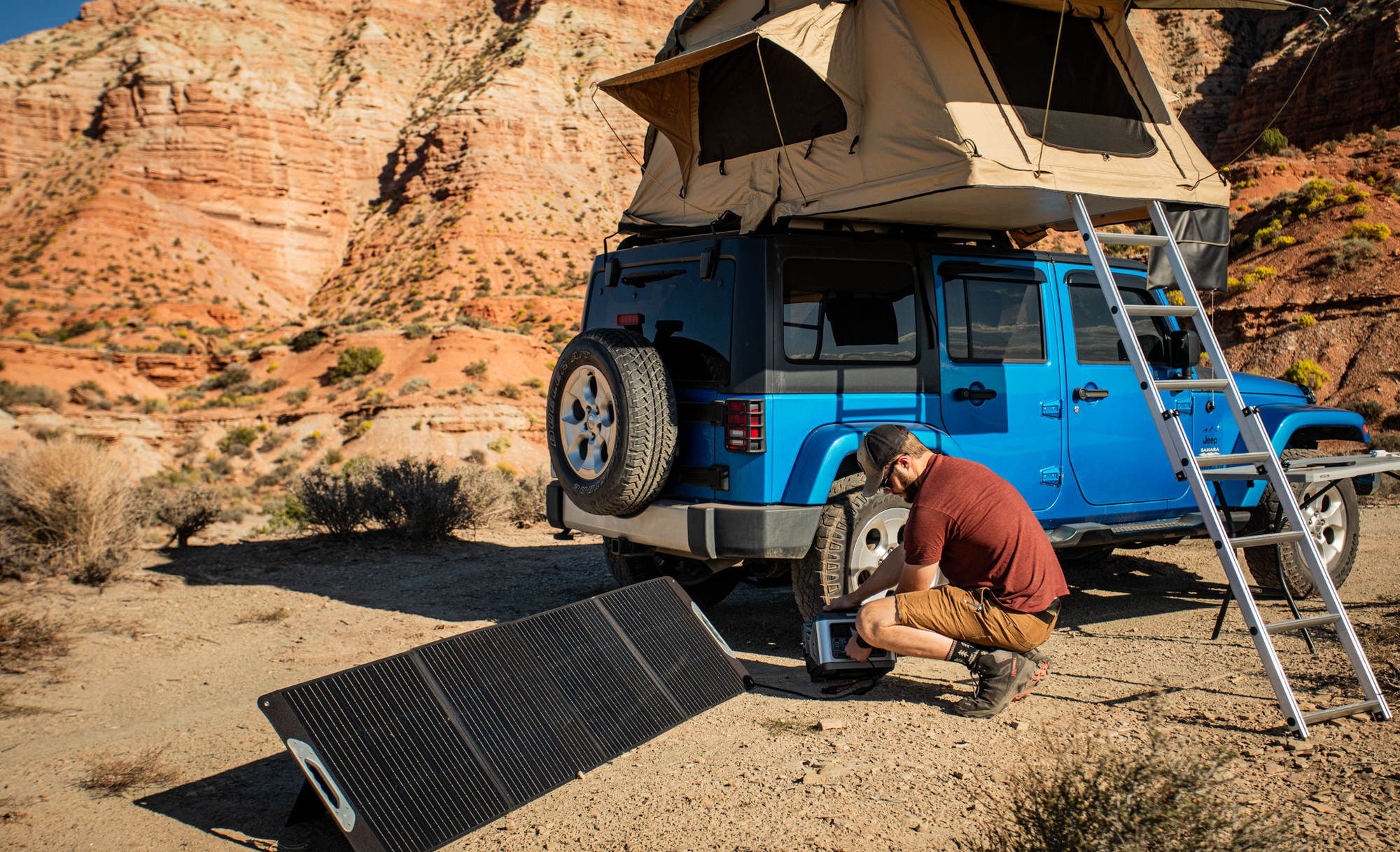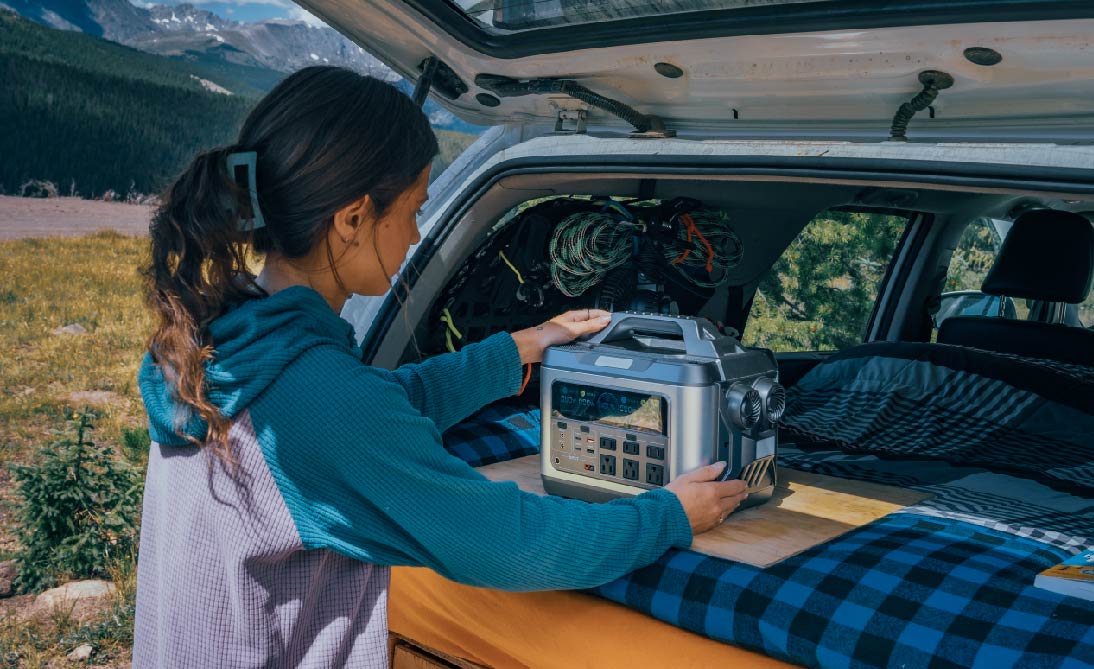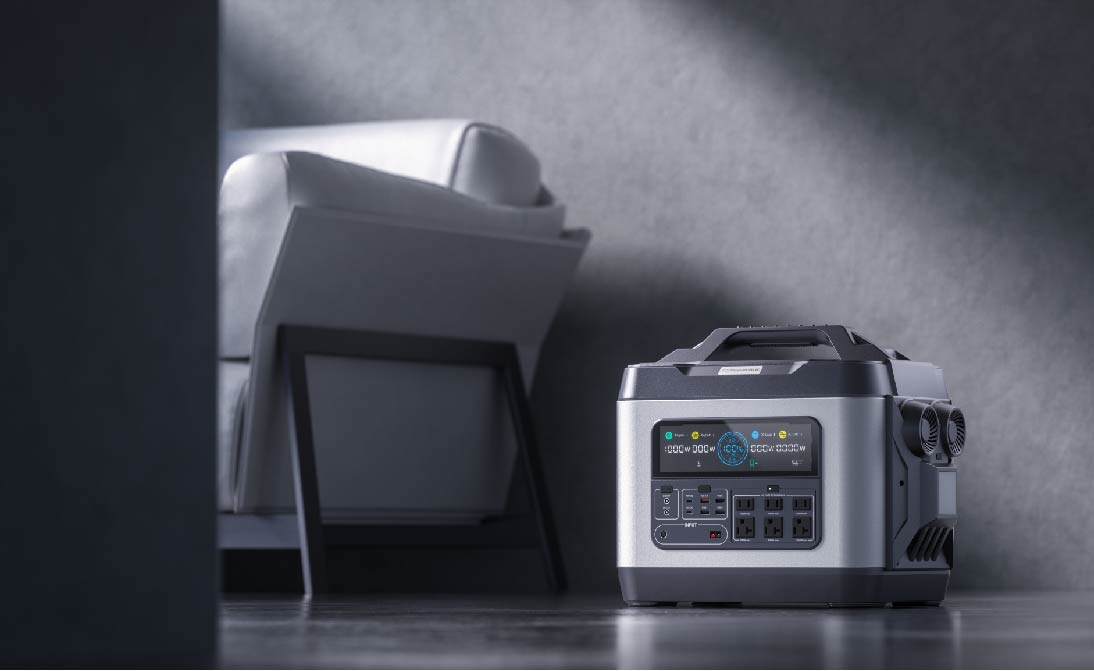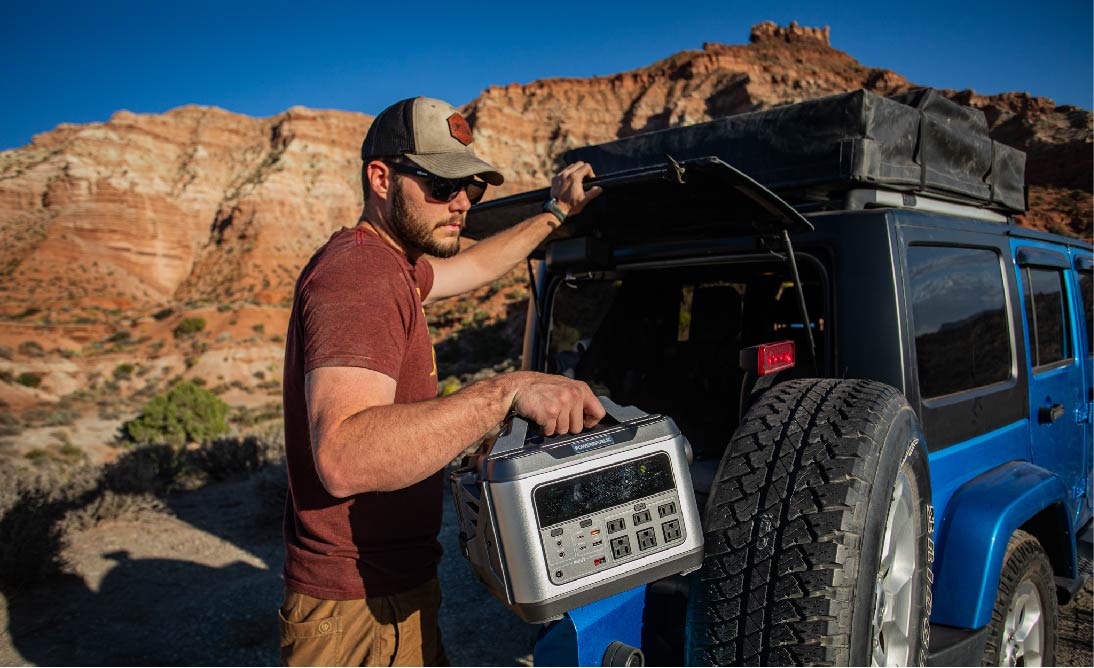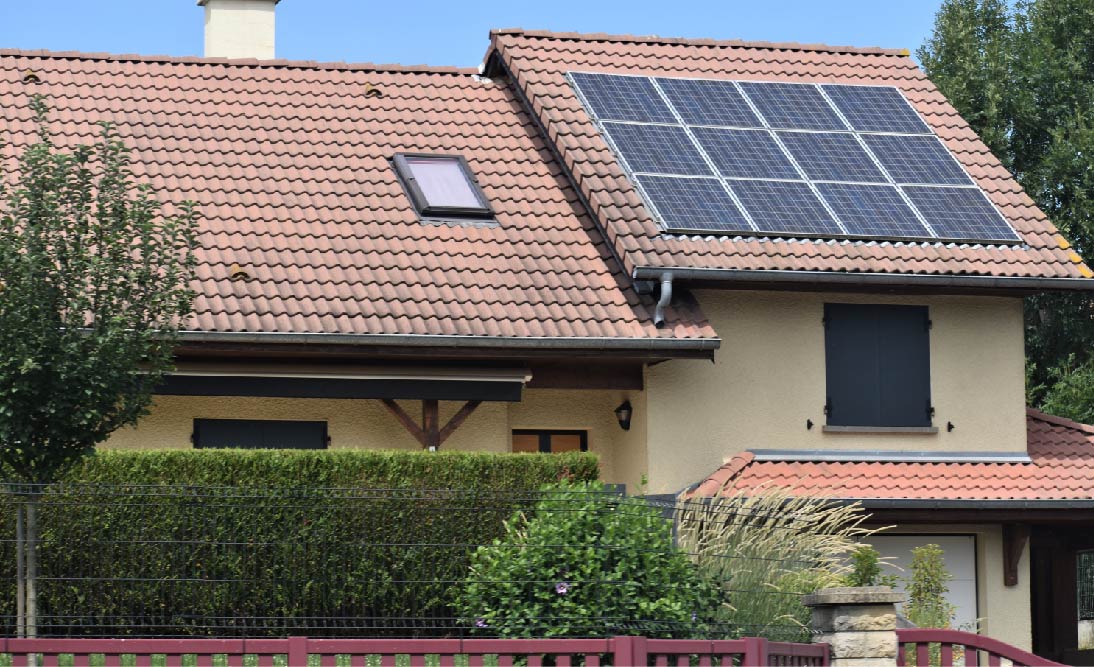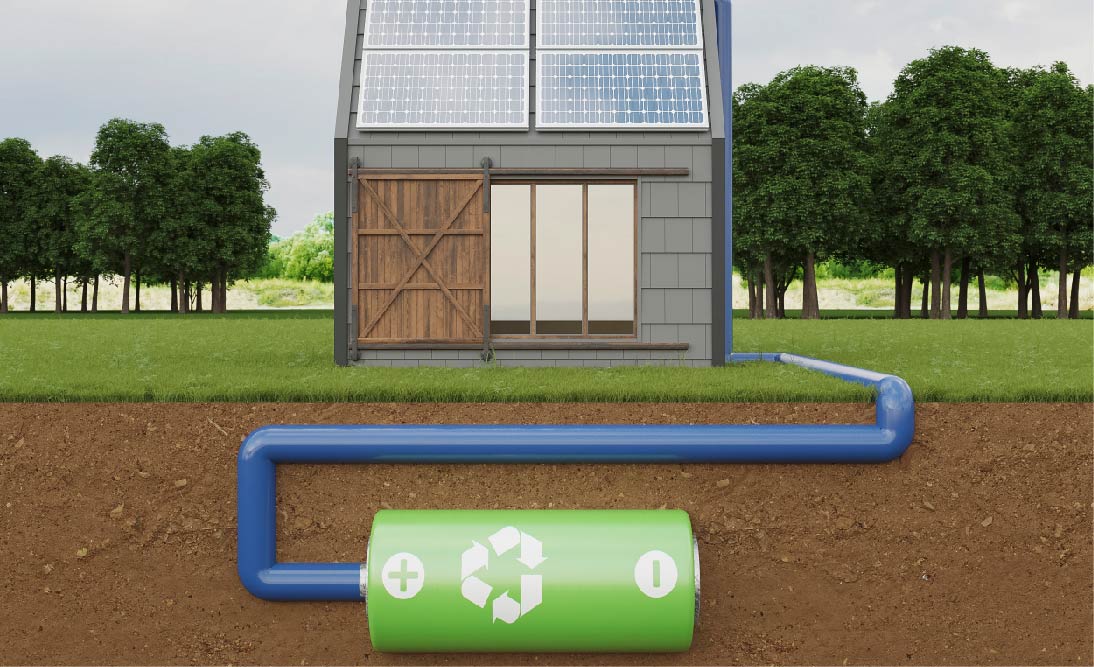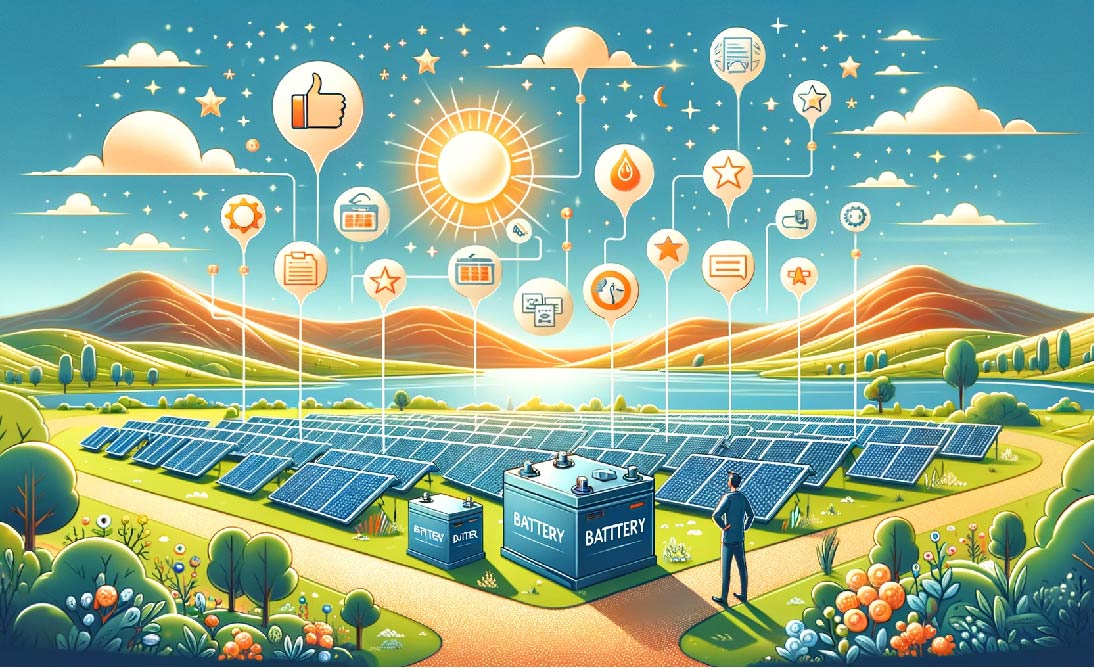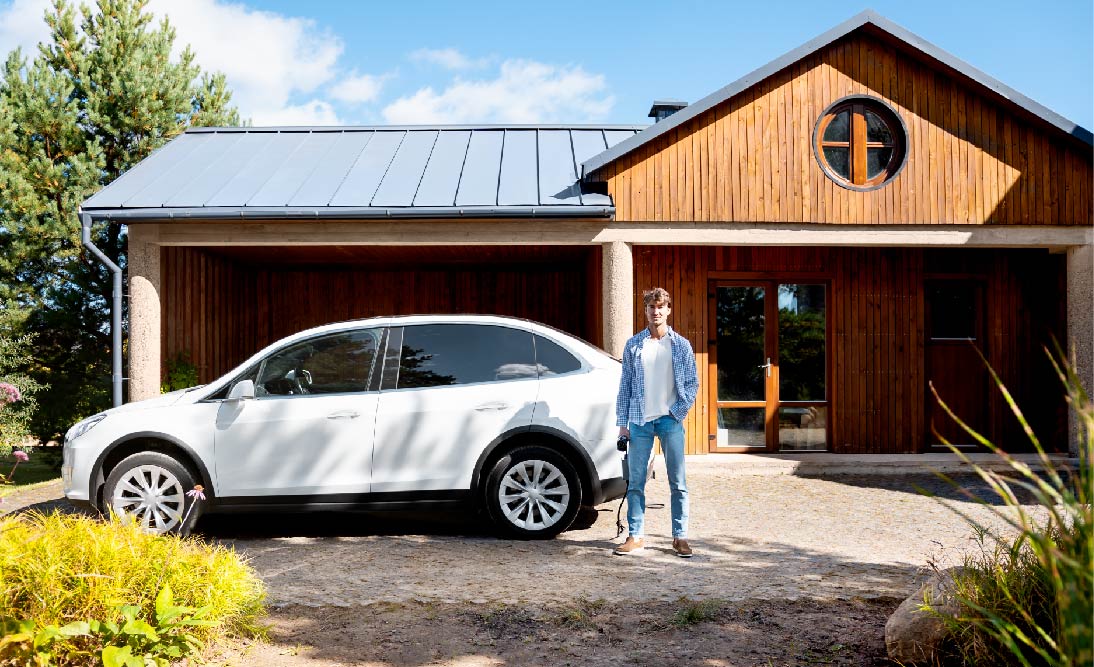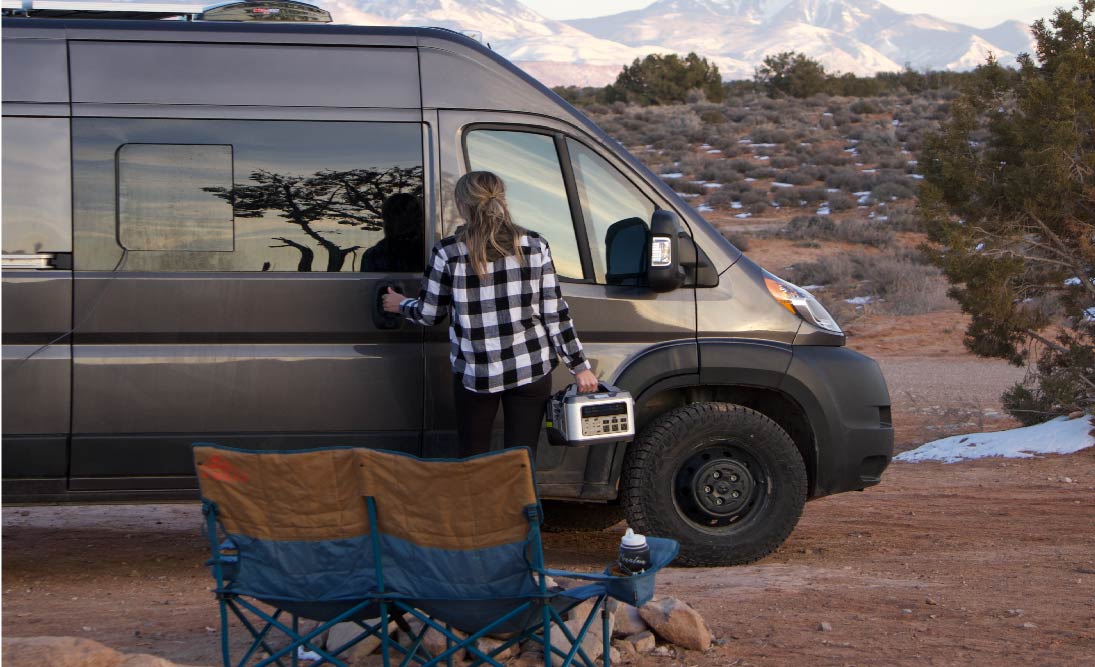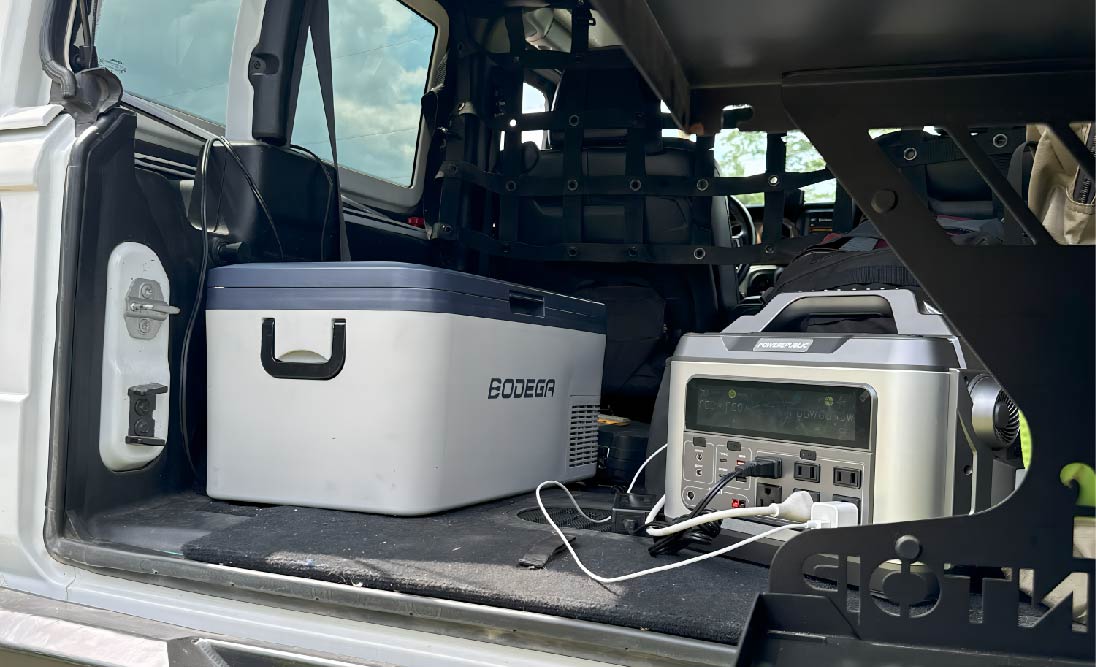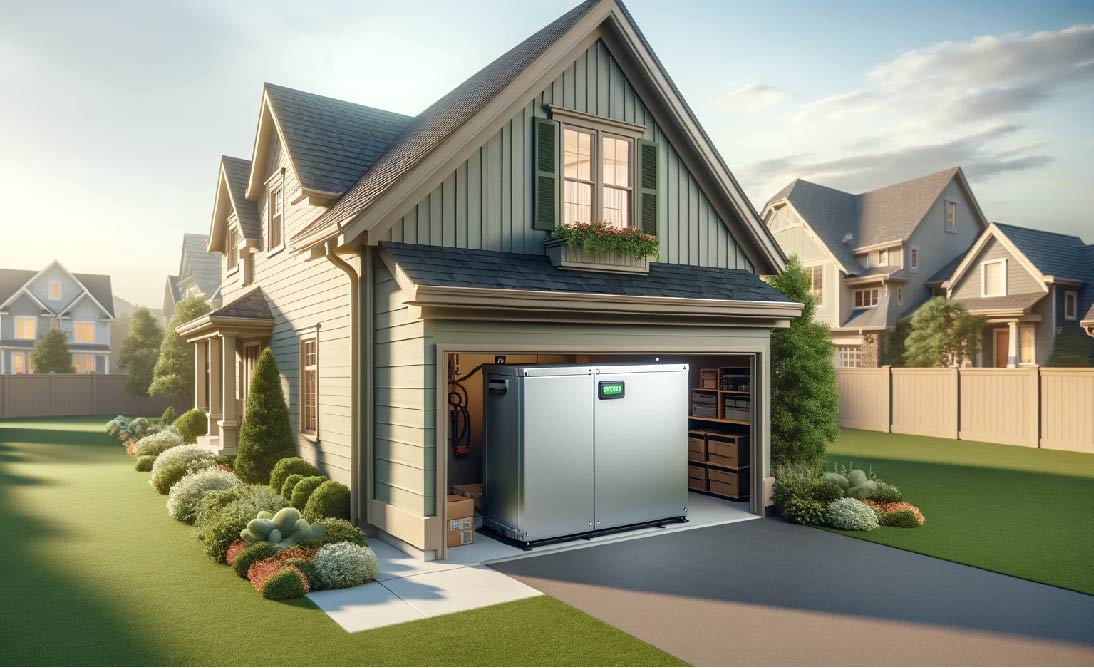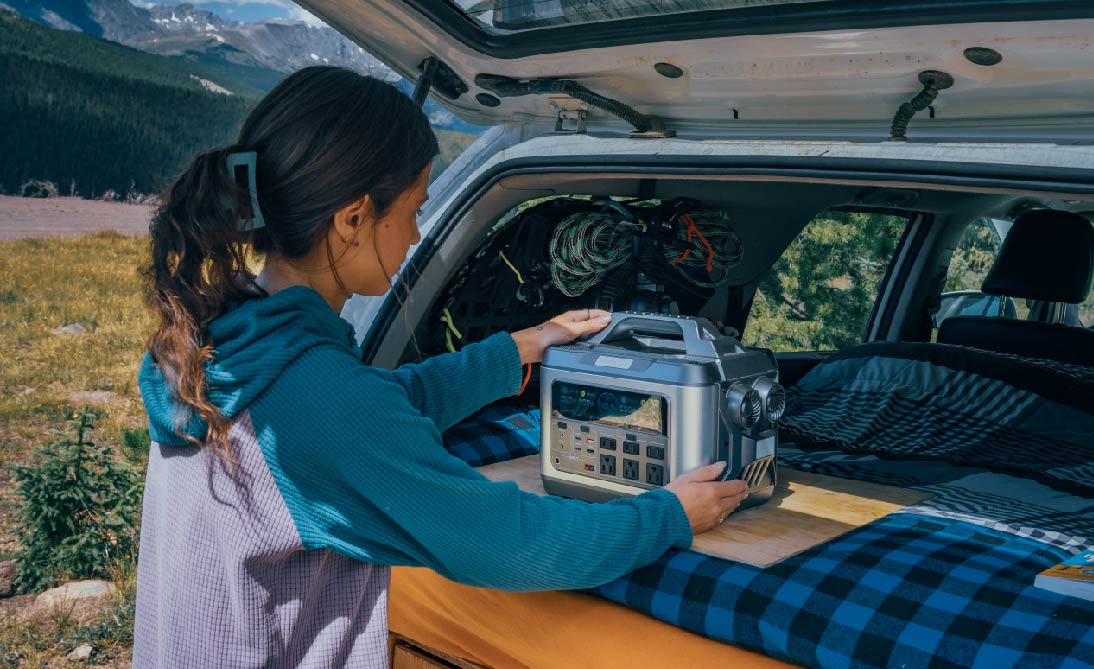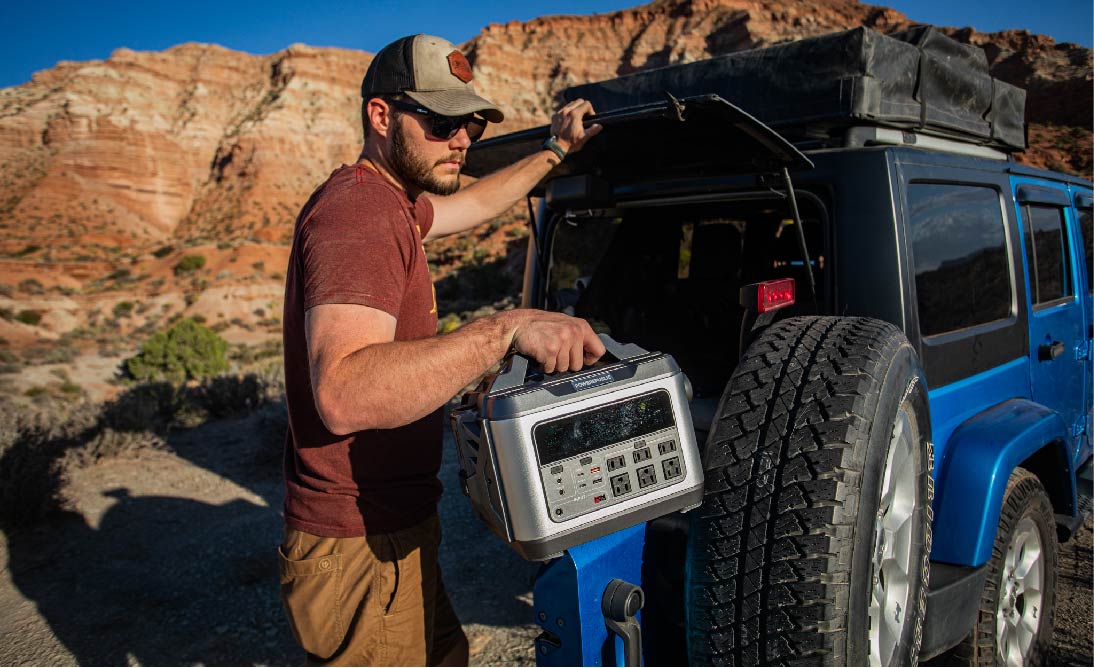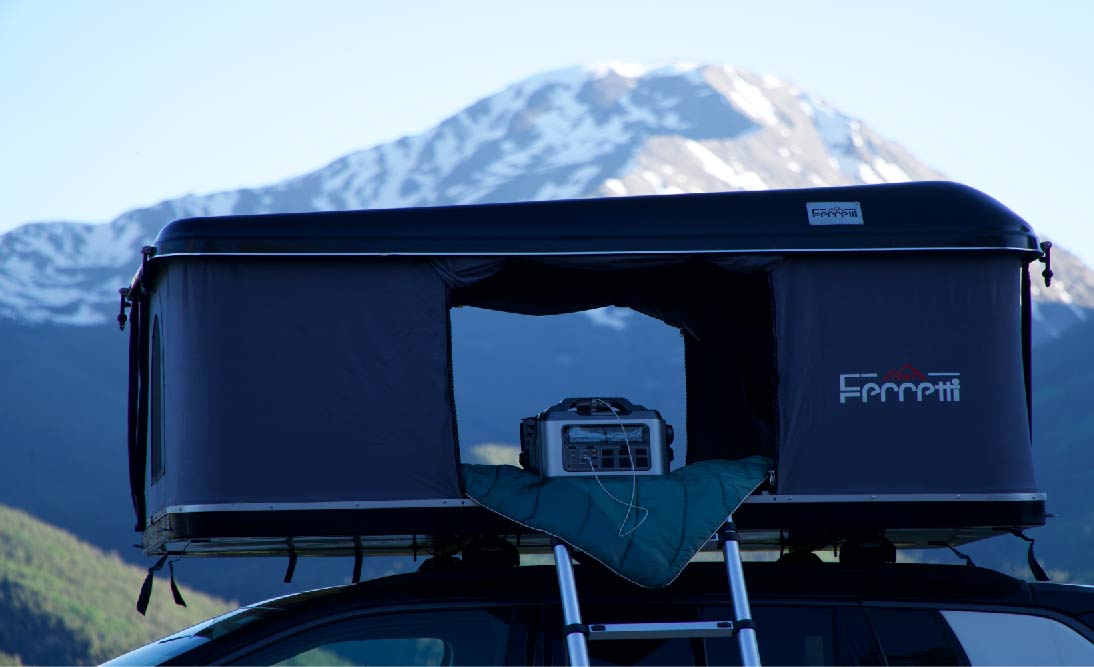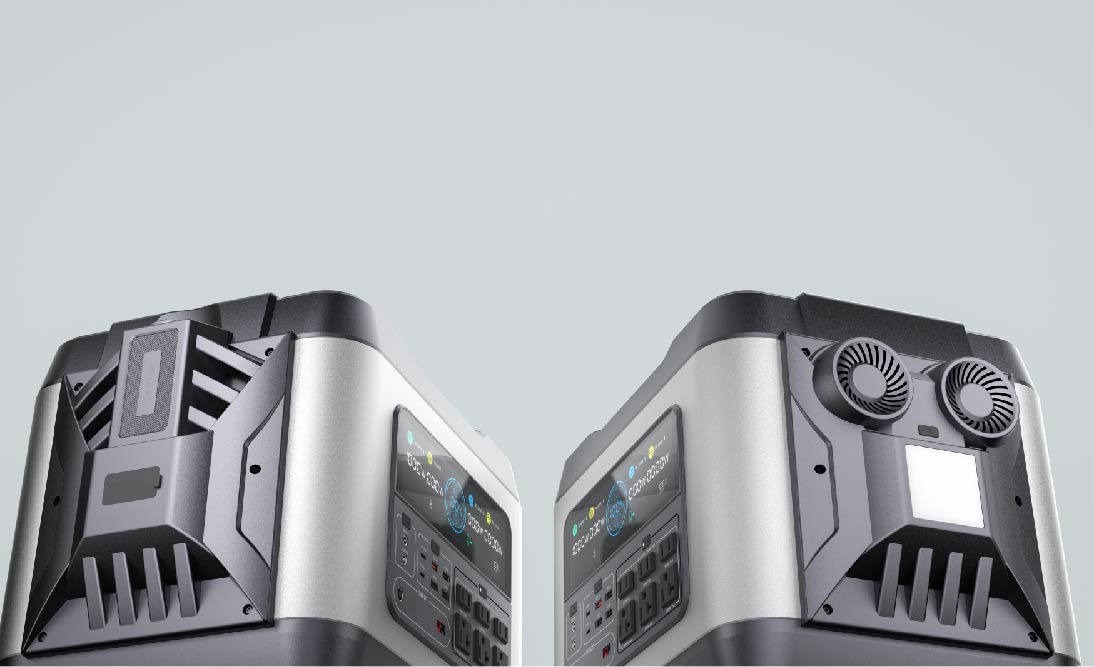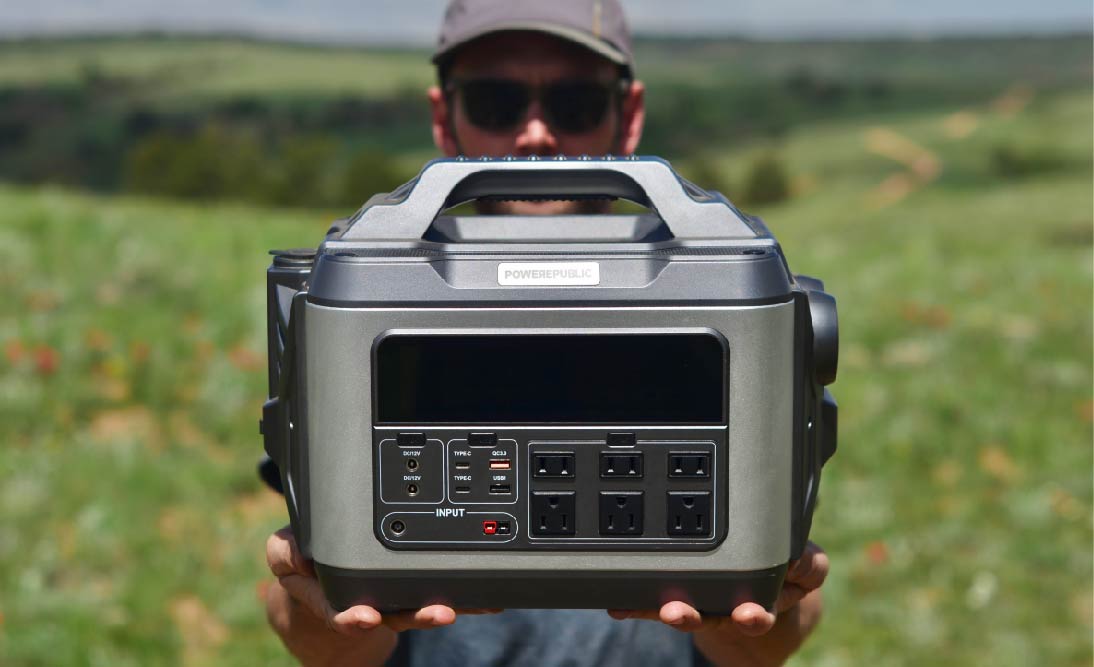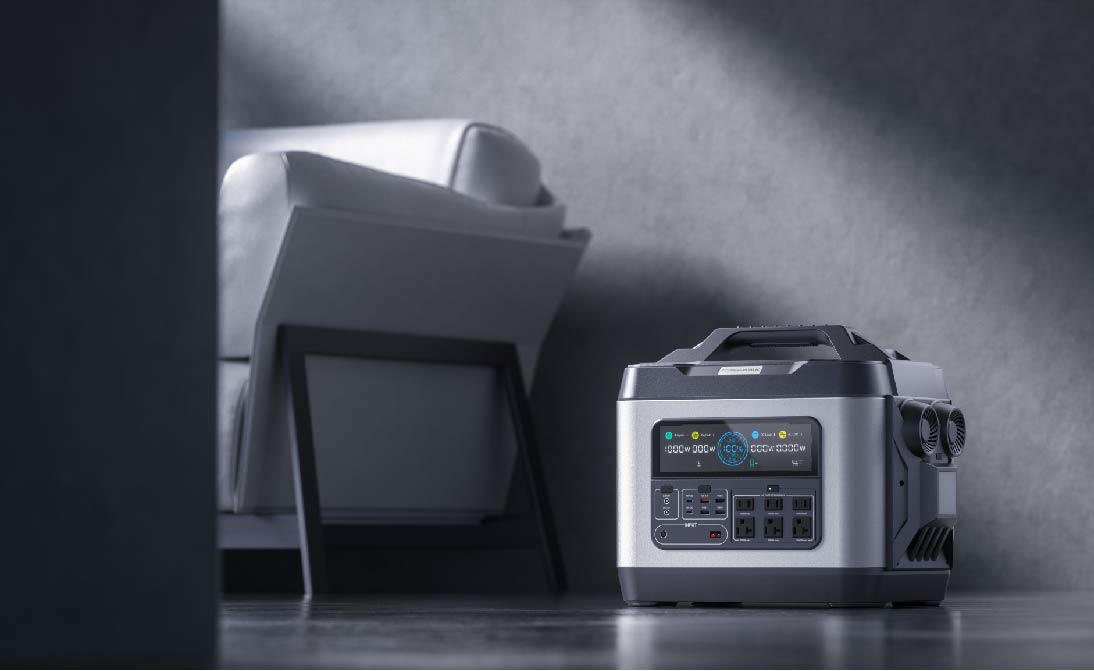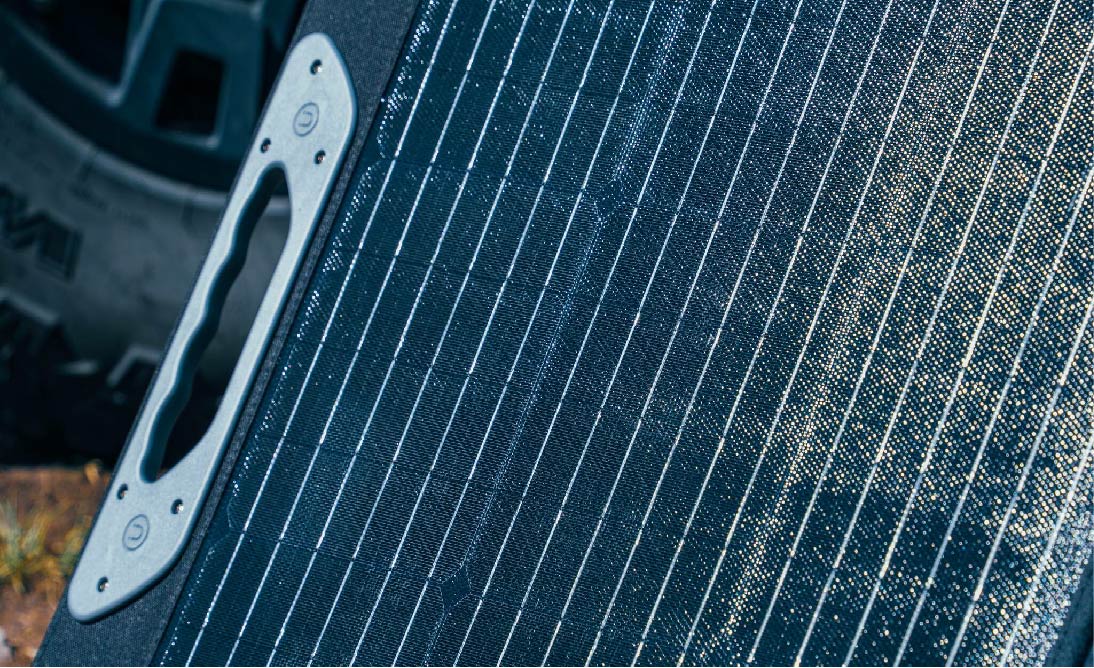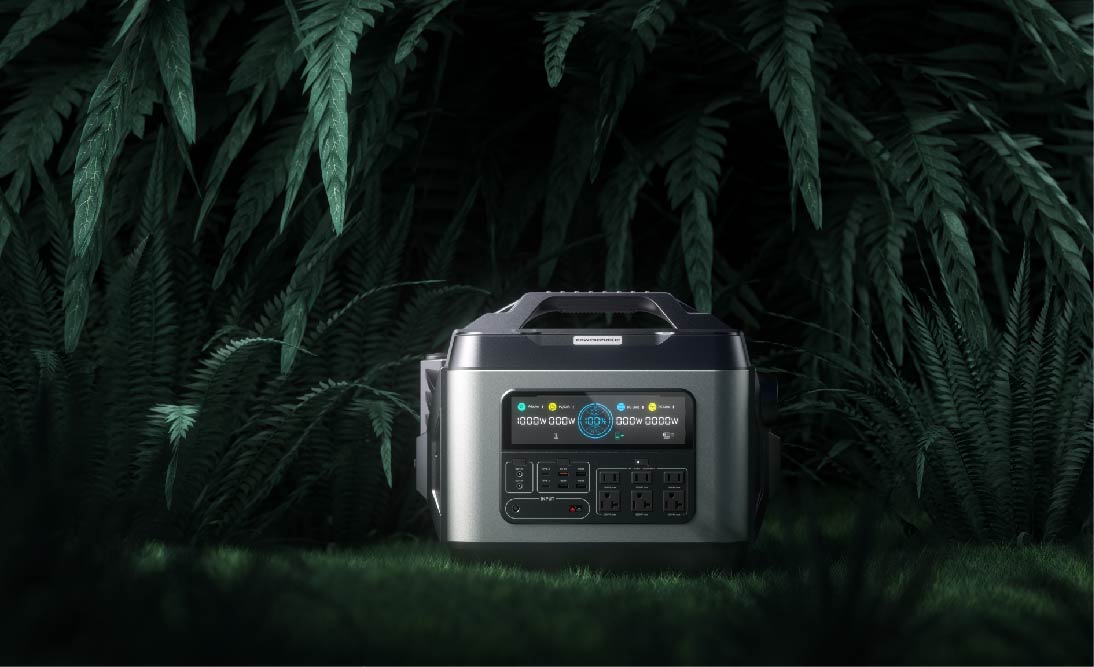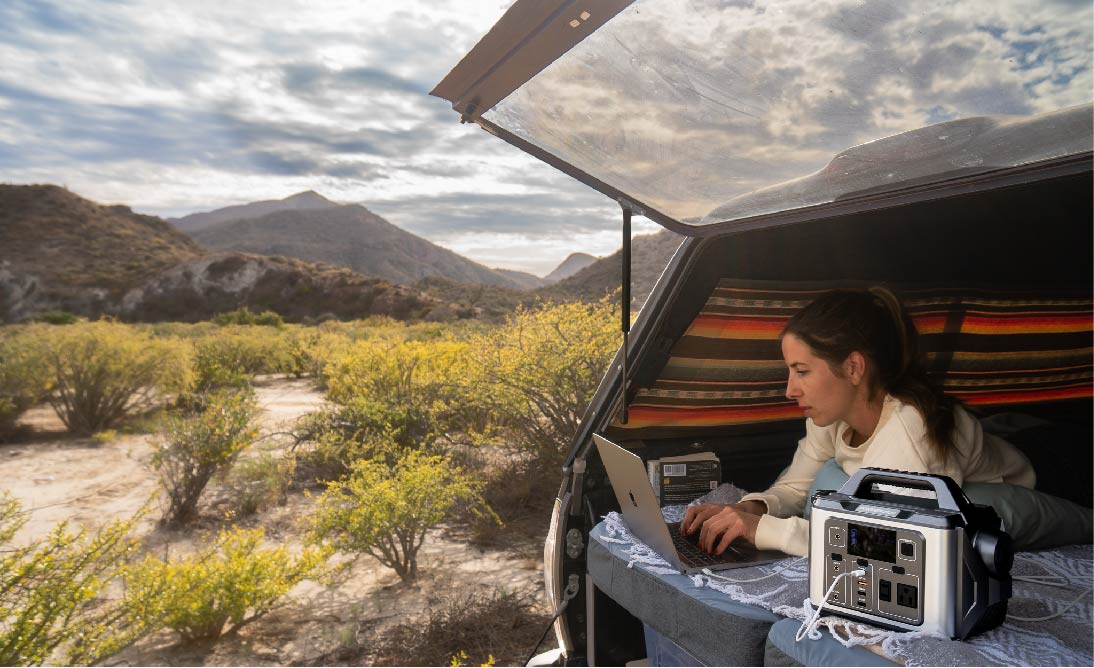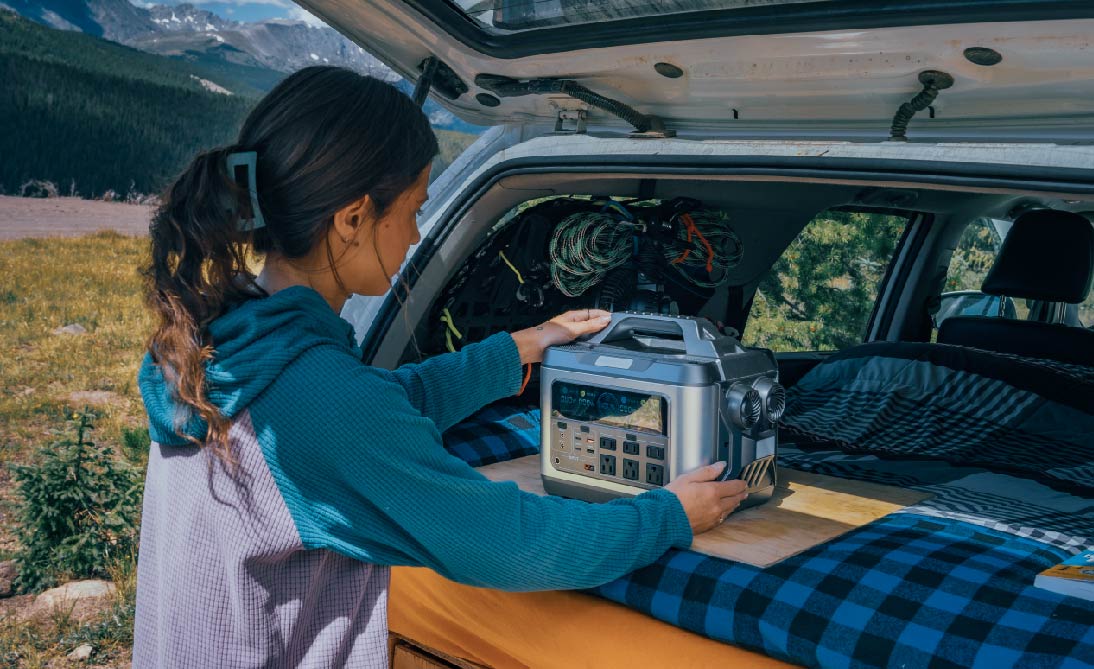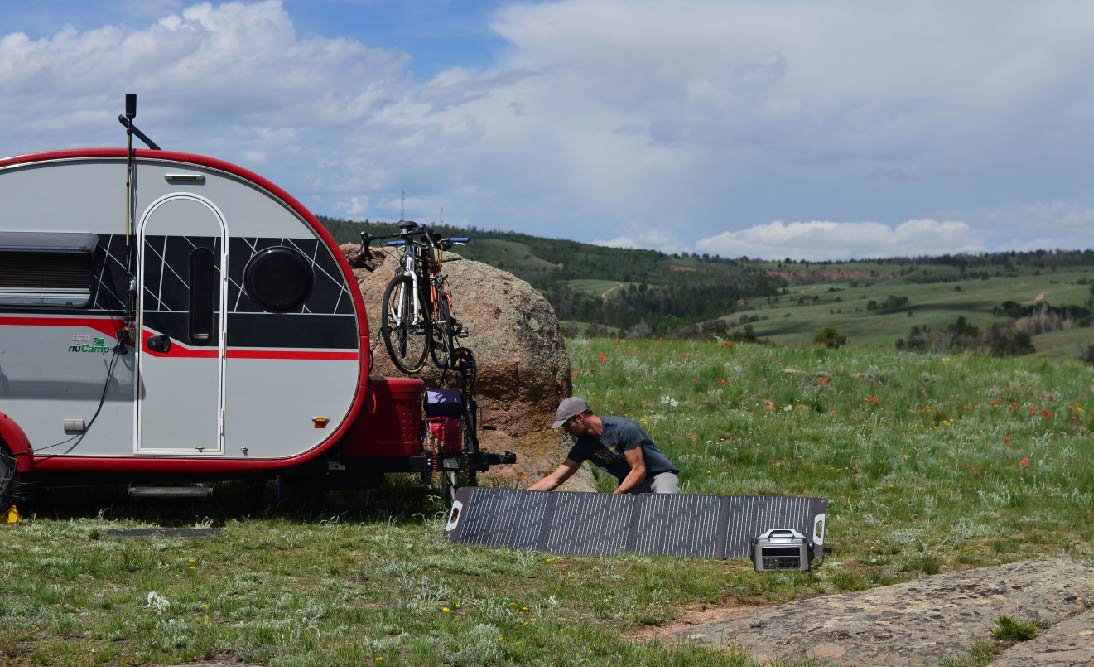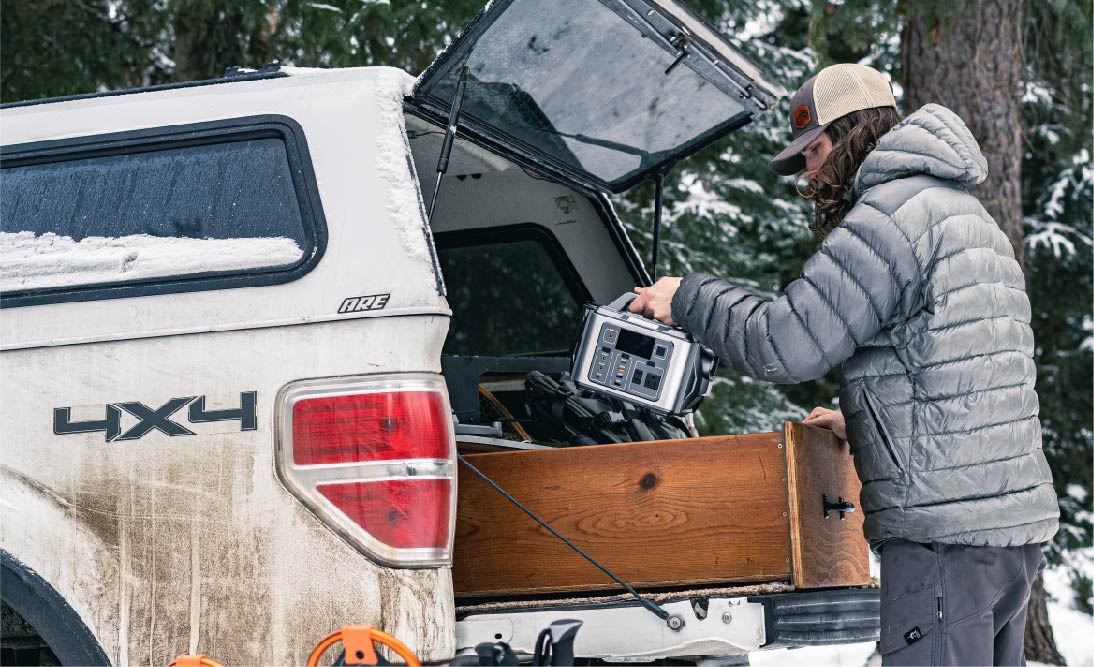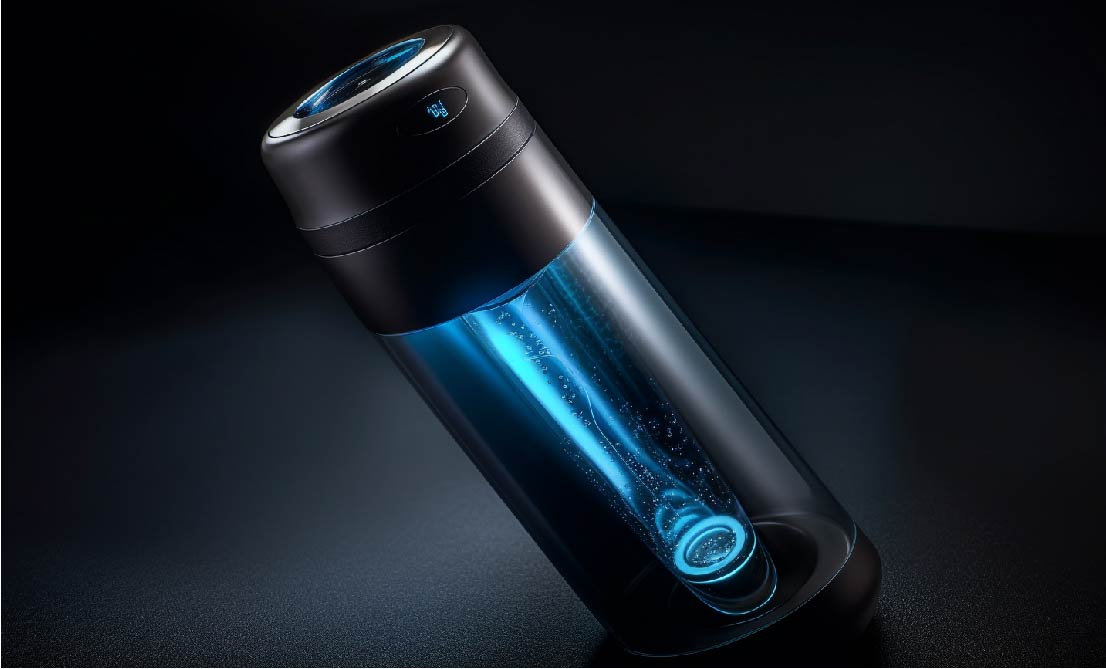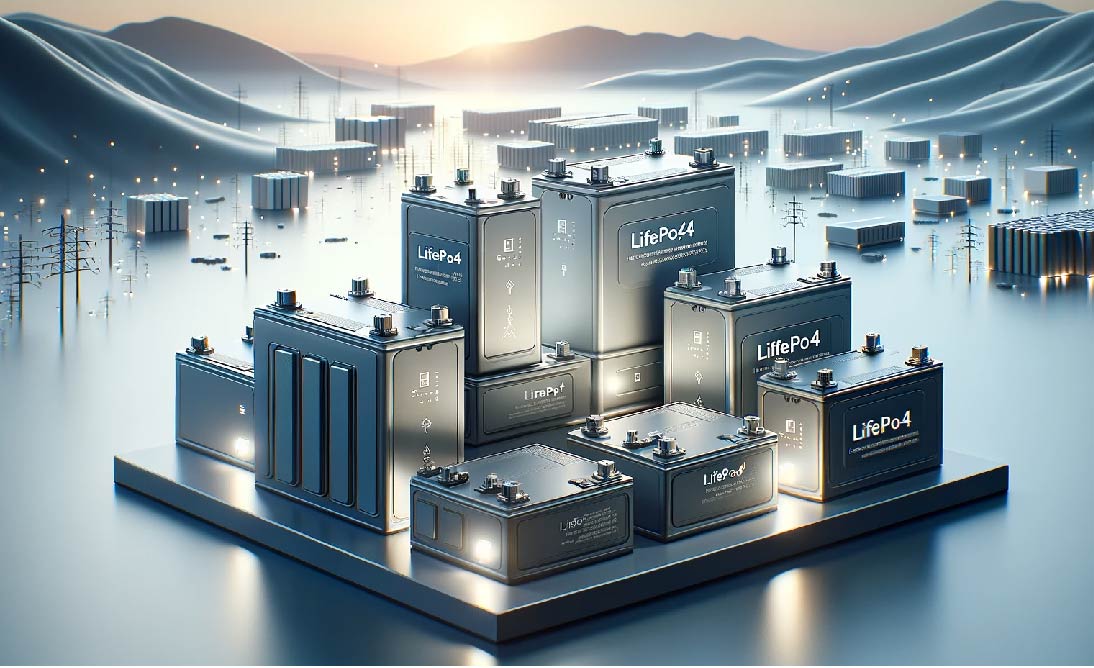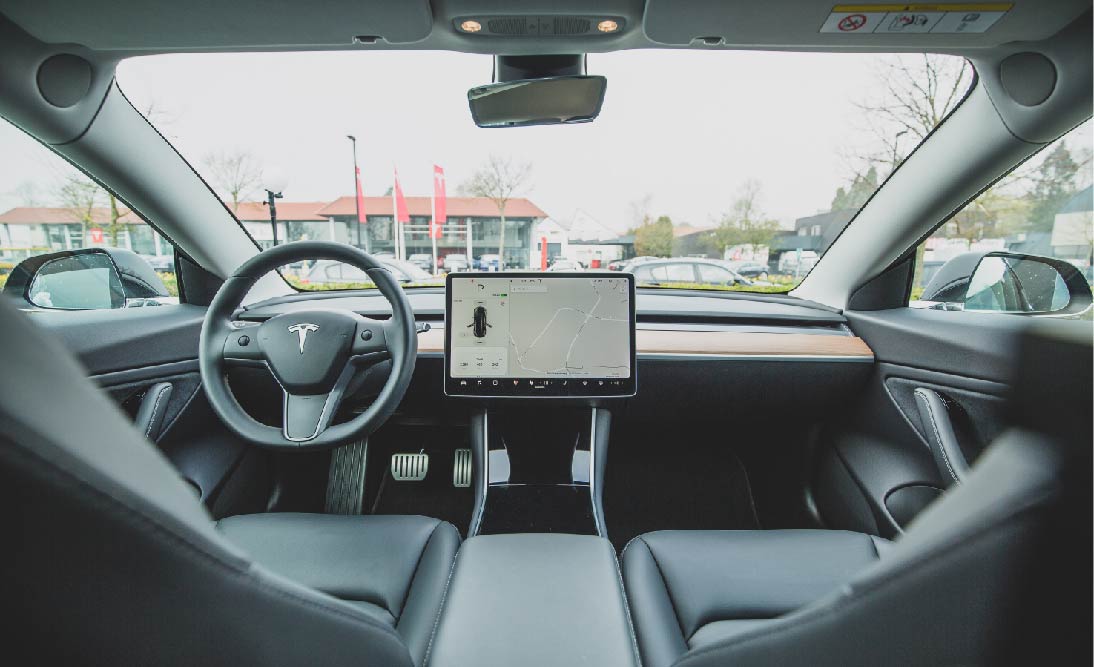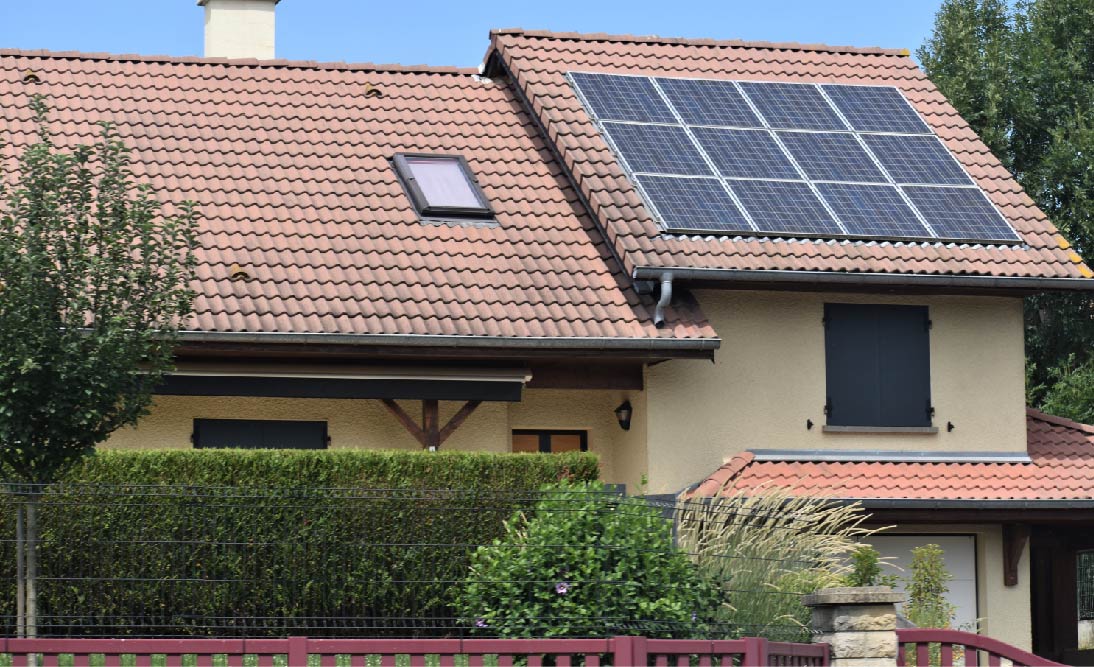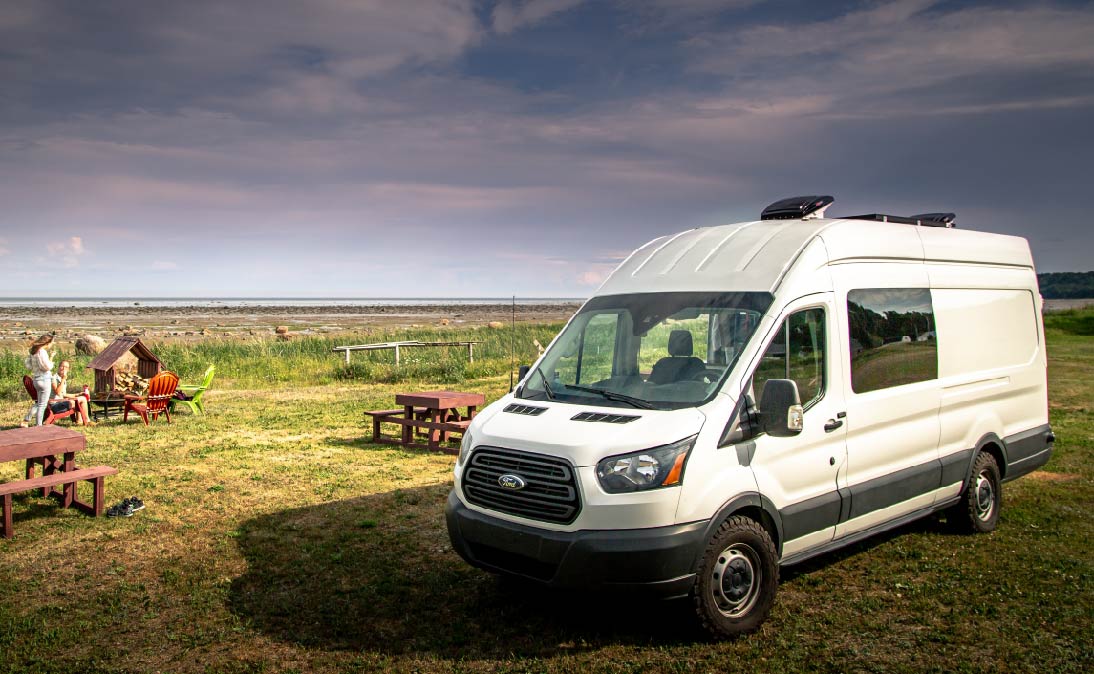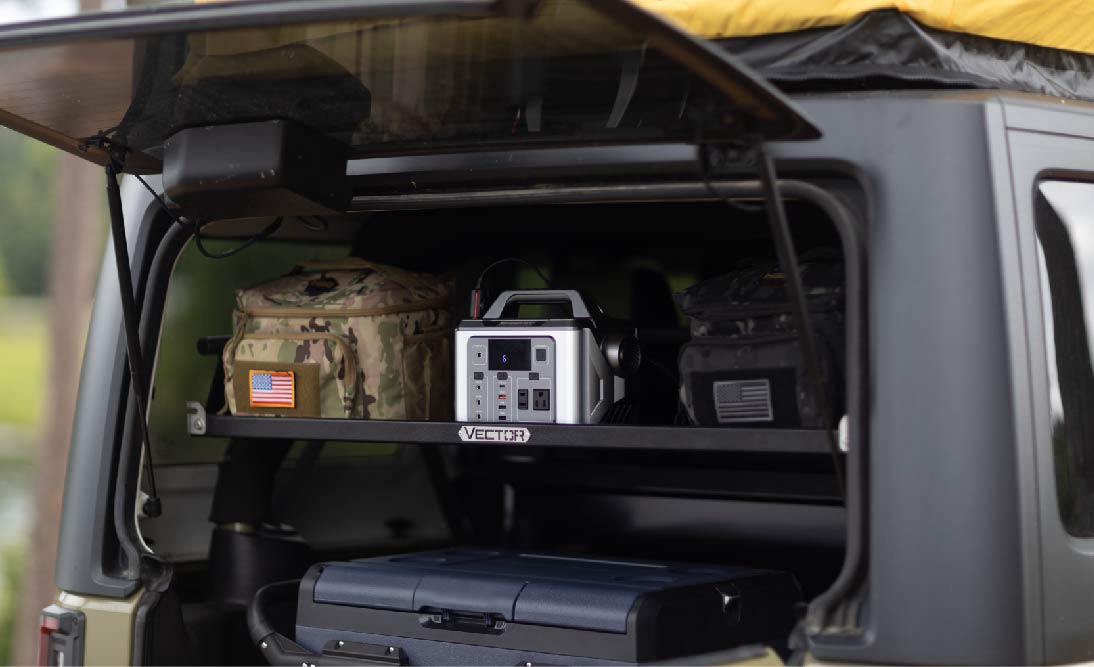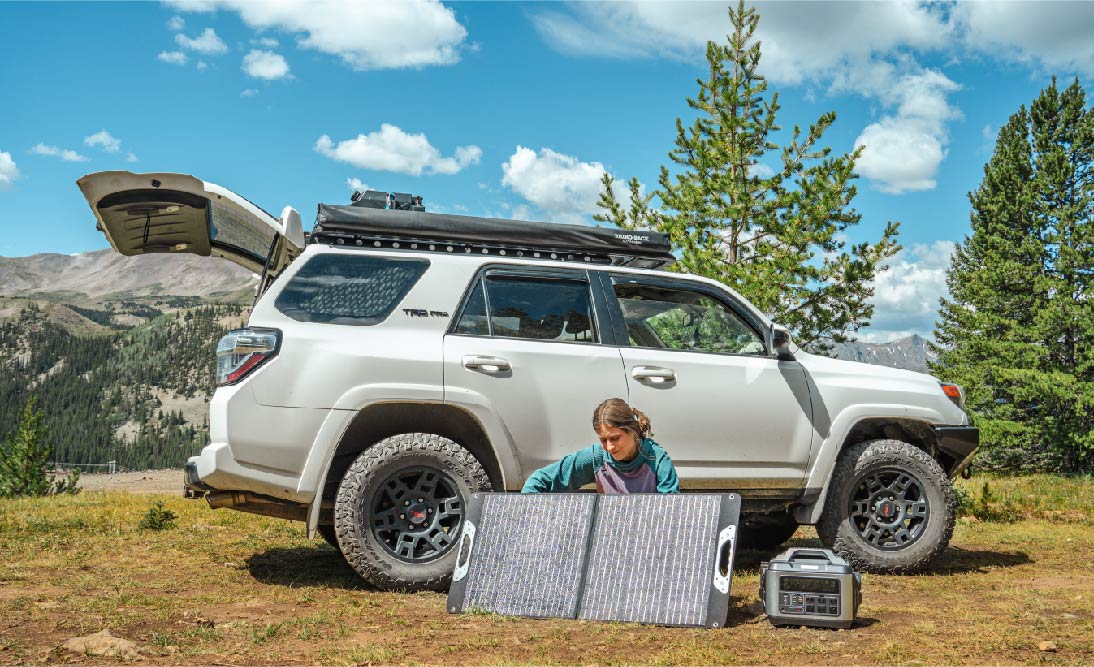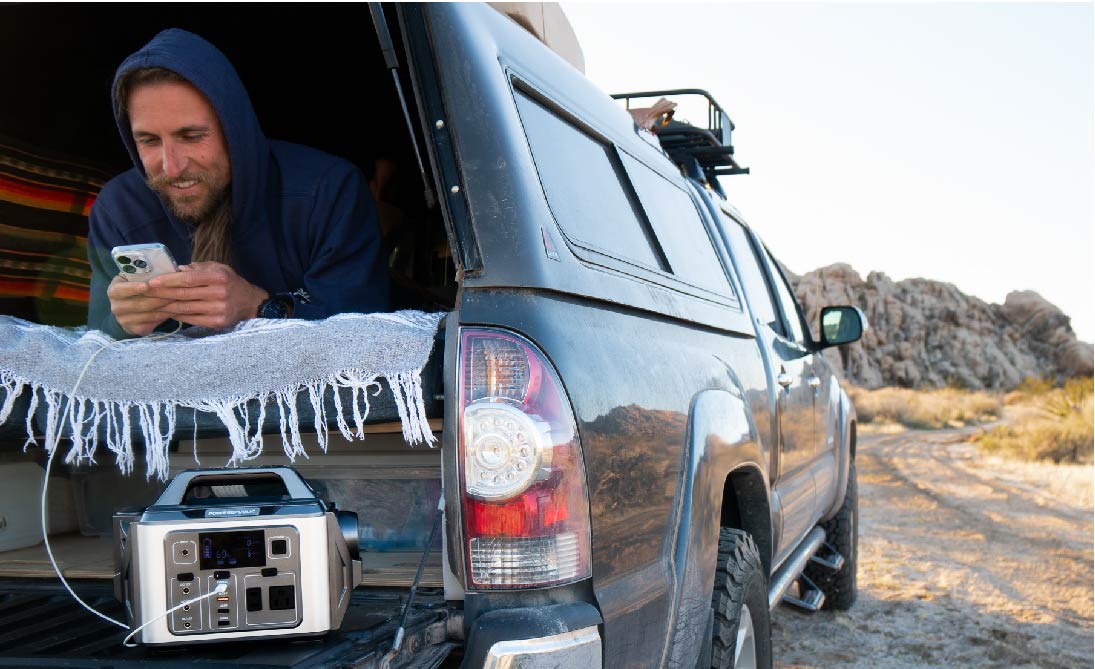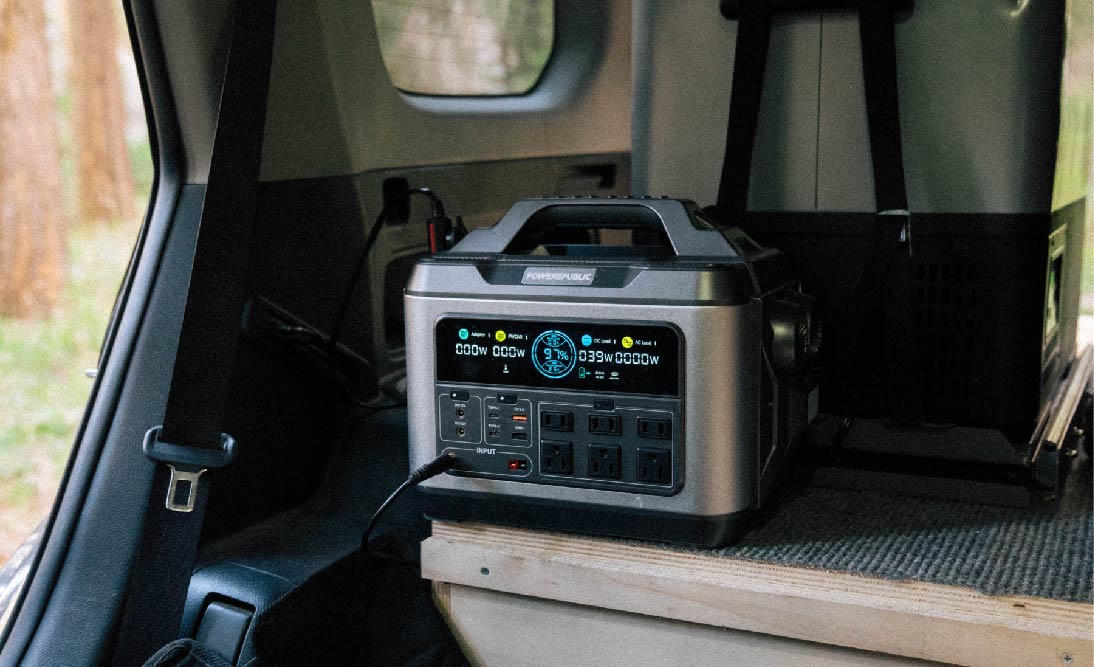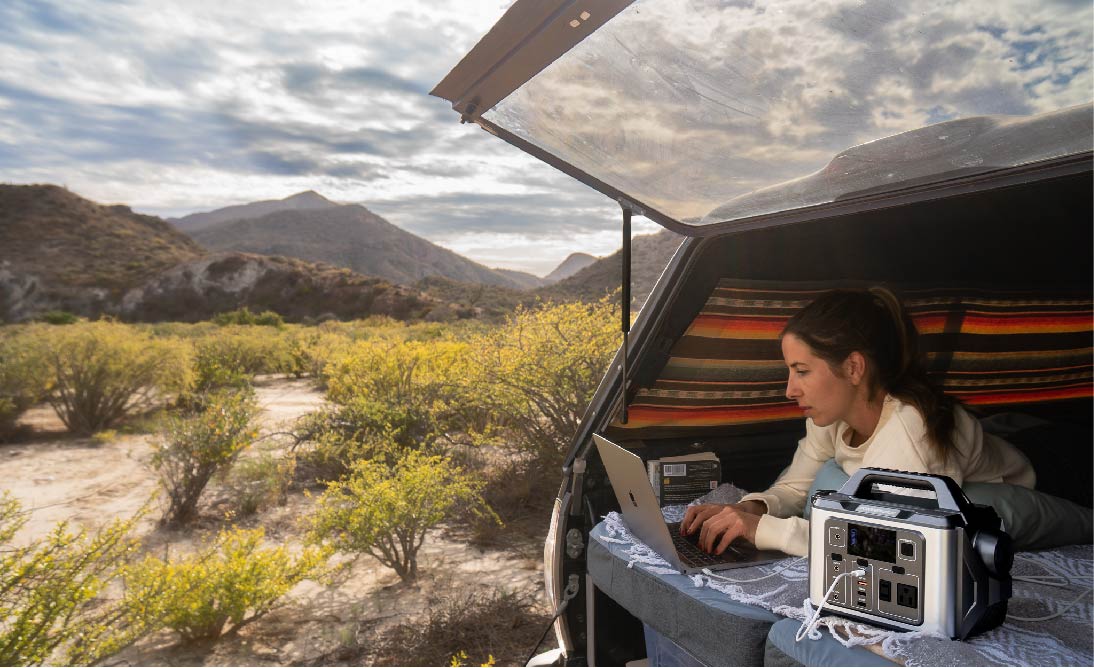Table of Contents:
-
Using a 1000-Watt Solar Generator To Power an Electric Blanket
-
Using a 1000-Watt Solar Generator To Power a TV for a Soccer Game
The trend of consistently embracing outdoor activities and opting for off-grid living is gaining momentum among outdoor enthusiasts and those aspiring to join the outdoor community. In today's world, where individuals are placing increased emphasis on both mental and physical health, outdoor pursuits and off-grid living have become notably popular.
Recognizing the significance of a reliable power source regardless of location, solar generators have emerged as a key player. Harnessing solar energy as their primary resource, these generators generate electricity for future use, presenting a more eco-friendly alternative to traditional generators.
In this discussion, we will explore 1000-watt solar generators, introduce the POWEREPUBLIC solar generator kits, address some frequently asked questions about 1000-watt solar generators, and delve into the pros and cons of this power solution. We aim to provide insights into the growing appeal of solar power in outdoor and off-grid lifestyles.
What's a 1000 Watt Solar Generator?

You can think of a 1000-watt solar generator as a combination of solar panels and a portable power station ranging from 1000W to 1500W. They are compact and don’t need any professional knowledge to install or set up.
Also, it can be explained as a portable and self-contained power system that utilizes solar energy to generate electricity for various applications. Designed to provide a clean and renewable energy source, it proves particularly useful for outdoor activities, camping, emergencies, or off-grid living. These kinds of systems will require some professional knowledge and skills to set up.
Here's a detailed breakdown of its main components and their functions as a portable solar generator kit:
Portable Power Station:
-
General Explanation: The core of the portable solar generator, the power station is a compact unit that houses the battery, inverter, charge controller, and various output ports.
-
Function: It stores and manages the energy generated by the solar panels, providing a convenient source of power for electronic devices and appliances.
Solar Panels:
-
General Explanation: Solar panels are the primary components responsible for capturing sunlight and converting it into electrical energy.
-
Function: Photovoltaic cells within the solar panels convert sunlight into direct current (DC) electricity through the photovoltaic effect. The solar panels are typically detachable and can be positioned to maximize sun exposure.
Output Ports:
-
General Explanation: These are various ports integrated into the portable power station for connecting and powering electronic devices.
-
Function: Output ports may include standard AC outlets, USB ports for charging small devices, DC ports for specific appliances, and other connectors to accommodate a range of devices.
Display Panel/Control Interface:
-
General Explanation: The control interface typically includes an LCD and buttons for user interaction.
-
Function: It allows users to monitor key information such as battery level, input/output power, and other settings. Some generators may also have controls for turning on or off specific outputs.
Car Charging Capability:
-
General Explanation: Many portable solar generators are equipped with the ability to charge from a car's 12-volt outlet.
-
Function: This feature provides an additional charging option, especially useful when sunlight is limited, and the generator can be charged while on the move.
A 1000-watt portable solar generator offers a balance between power output and portability, making it suitable for camping, outdoor activities, emergencies, and off-grid living where access to a reliable power source may be limited. The flexibility of these generators makes them a popular choice for individuals seeking sustainable and versatile power solutions.
Here's a detailed breakdown of its main components and their functions of a solar generator system:
Solar Panels:
-
General Explanation: Solar panels are the primary components responsible for capturing sunlight and converting it into electrical energy.
-
Function: Photovoltaic cells within the solar panels convert sunlight into direct current (DC) electricity through the photovoltaic effect.
Charge Controller:
-
General Explanation: The charge controller regulates the amount of electricity flowing from the solar panels to the battery to prevent overcharging.
-
Function: It ensures the battery is charged optimally and protects it from damage due to excessive charging or discharging.
Battery:
-
General Explanation: The battery stores the energy generated by the solar panels for later use, allowing for power availability during periods of low or no sunlight.
-
Function: It stores the converted electrical energy in the form of direct current (DC) and supplies power when needed.
Inverter:
-
General Explanation: The inverter converts the direct current (DC) electricity stored in the battery into alternating current (AC) electricity, which is the standard form of electricity used by most household appliances.
-
Function: It enables the use of various electronic devices and appliances that require AC power.
Power Outlets:
-
General Explanation: These are the standard electrical outlets integrated into the solar generator.
-
Function: They provide a means for users to connect and power their devices, such as laptops, smartphones, lights, small appliances, and more.
USB Ports:
-
General Explanation: USB ports are included for charging small electronic devices directly from the solar generator.
-
Function: They cater to the increasing demand for USB-powered devices, including smartphones, tablets, and other gadgets.
Display Panel/Control Interface:
-
General Explanation: A user interface that typically includes an LCD and control buttons.
-
Function: It allows users to monitor the battery level, input/output power, and other essential information, and it may provide control over various settings.
DC Ports:
-
General Explanation: These are ports that provide direct current (DC) power for specific devices.
-
Function: Devices like DC-powered appliances, LED lights, or other equipment can be directly connected to these ports.
By combining these components, a 1000-watt solar generator system offers a versatile and portable power solution, tapping into renewable energy sources to provide electricity in various settings.
POWEREPUBLIC T1200 Solar Generator Kits and Product Review

As mentioned earlier, constructing your solar generator system can be time-consuming and requires professional knowledge and experience. Instead, opting for a portable solar generator kit might be a better choice for those who prefer a ready-made solution. However, it is crucial to evaluate your power needs and budget before making a purchase.
If you're in search of a 1000-watt solar generator that perfectly balances functionality, versatility, and portability, consider the POWEREPUBLIC T1200+PV100 or T1200+PV200 solar generator kits. They are excellent options for on-the-go power.
The Functionality of T1200 Solar Generator Kits:
The POWEREPUBLIC T1200 portable power station boasts a running power of 1200W, a surge power of 2600W, and a battery capacity of 1110Wh. This makes it ideal for powering not only essential devices but also larger items such as coffee machines, blenders, electric blankets, TVs, mini-fridges, and more. The surge power can handle devices and appliances that require a significant amount of power during startup.
Versatility of T1200 Solar Generator Kits:
Featuring 13 different output ports, including 6 AC outlets, 2 Type-C ports, 1 QC3.0 port, 1 USB port, 2 DC/12V ports, and 1 Cigarette port, you can use it to power up to 13 devices simultaneously. The LED light on the side can illuminate your space if you lack LED lights at your campsite. The aluminum-alloy body, turbine engine, and aircraft wing design make it rugged and durable.
Additionally, the POWEREPUBLIC T1200 portable power station can be paired with either a 100W or 200W portable solar panel. Both panels use monocrystalline cells with a 23% conversion rate, a long-lasting ETFE coating for weather resistance, and several USB ports on the back for emergency power. Kickstands are included to maximize sunlight absorption. The only difference lies in the unfolded dimension and solar input, allowing you to choose based on your preferences for solar input, dimension, and price.
Portability of T1200 Solar Generator Kits:
Weighing around 31 pounds (14kg), the POWEREPUBLIC T1200 portable power station remains quite portable for its power and capacity level. If you prioritize portability and space, the POWEREPUBLIC T1200+PV100 solar generator kit would be a better choice. For those valuing faster recharging time, the POWEREPUBLIC T1200+PV200 solar generator kit is the preferred option.
POWEREPUBLIC T1200+PV200 Solar Generator Kits Product Review:
We collaborated with Abby, a full-time van lifer, who used our T1200+PV200 solar generator kits during her trip. She successfully utilized the combo to power her hair dryer, make waffles, operate her water heater, and charge devices under the sun. If you're interested in this combo, you can click here to watch the video.
Using a 1000-Watt Solar Generator to Power an Electric Blanket:

When winter camping, staying warm is crucial. Many heaters require at least 1000W to start up, and if you use our T1200 (1200W/1110Wh), the battery will drain within an hour or so. Instead, you can use an electric blanket (50-110W) to keep yourself warm in the car.
We collaborated with Madison, a frequent car camper from Canada, who recommends using an electric blanket instead of a heater based on her real experience. Click here to learn more about it.
Using a 1000-Watt Solar Generator to Power a TV for a Soccer Game:

A commonly asked question is whether a portable power station can power a TV. The answer is yes! Let's take a 96W TV as an example; our T1200 can power it for about 9.8 hours. Keep in mind that if you want to power other devices and appliances simultaneously, the running time for the TV will decrease.
We collaborated with Matt, an Overlander who consistently goes camping and overlanding during weekends. One of his interests is watching TV off-grid, and he has successfully used our T1200 portable power station to power his TV for soccer games. To learn more about his experience, click here to watch the video.
Using a 1000-Watt Solar Generator to Power a Mini-Fridge:

Keeping your food and drinks fresh and iced is essential during camping. As mini-fridges gain popularity among outdoor enthusiasts, many wonder if a solar generator or a portable power station can power a mini-fridge. The answer is yes.
Most mini-fridges consume around 70W to 100W. POWEREPUBLIC T1200 solar generator kits can power it for about 9 to 13 hours. Once again, if you charge other devices and appliances simultaneously, the running time will decrease.
We collaborated with Madison K, a car camper who consistently goes car camping during the weekend. One of her interests is making drinks and sandwiches in the wild. She has successfully used our T1200 portable power station to power her mini-fridge all day and make root beer floats. To learn more about her experience, click here to watch the video.
Sunchaser Tyme & Andy - 24 hours in Glass House
Living off-grid is one of the most popular lifestyles these days. You can enjoy nature to the fullest, put your mind at ease, and be away from the crowded city. Our T1200 solar generator can power a small cabin, but if you want to power an entire house, a whole-house solar generator system would be a better choice.
We have collaborated with Tyme and Andy, who consistently travel in their lives. They worked with Airbnb and stayed in a glass house for 24 hours, completely off-grid. Besides using our T1200 solar generator kits to power their devices and appliances, they also use them to power some heavy-duty tools for a birdhouse challenge.
If you want to know how they do it, watch the video below starting at 5 minutes 15 seconds:
Pros and Cons Of a 1000-Watt Solar Generator

Pros Of A 1000 Watt Solar Generator
-
Portability: Many 1000-watt solar generators are designed to be portable, making them suitable for camping, outdoor activities, and emergencies.
-
Ease of Use: Solar generators are typically user-friendly, with plug-and-play setups. You can harness solar energy without extensive technical knowledge.
-
Clean and Renewable Energy: Solar generators produce electricity using sunlight, a clean and renewable energy source, reducing your carbon footprint.
-
Silent Operation: Unlike traditional generators that run on fuel, solar generators operate silently, contributing to a quieter and more peaceful environment.
-
Low Maintenance: Solar generators generally require minimal maintenance compared to traditional generators. There are no fuel filters or oil changes needed.
-
Environmentally Friendly: Solar generators do not emit harmful fumes or contribute to air pollution, promoting a cleaner and healthier environment.
Cons Of A 1000 Watt Solar Generator
-
Limited Power Capacity: A 1000-watt solar generator may not provide sufficient power for larger appliances or high-energy-consuming devices. It's important to assess your energy needs.
-
Dependence on Sunlight: Solar generators rely on sunlight to recharge, so their effectiveness may be limited on cloudy days or during the night. Battery capacity becomes crucial in these situations.
-
Initial Cost: The initial cost of purchasing a solar generator, including solar panels and battery storage, can be higher compared to traditional generators. However, long-term savings on fuel costs may offset this.
-
Size and Weight: While designed for portability, some 1000-watt solar generators may still be relatively heavy or bulky compared to smaller power banks.
-
Not Suitable for High-Powered Appliances: Solar generators in this wattage range may not be powerful enough to run certain high-wattage appliances or tools.
-
Limited Lifespan of Batteries: The batteries in solar generators have a finite lifespan and may need replacement after a certain number of charge cycles.
Before investing in a 1000-watt solar generator, it's essential to evaluate your specific power needs, the climate in your area, and how you intend to use the generator to determine if it's the right fit for you.
How To Select The Best 1000 Watt Solar Generator?

Selecting the best 1000-watt solar generator involves careful consideration of your power needs, duration of use, budget, and environmental conditions. Here's a step-by-step guide with examples and calculations to help you make an informed decision:
Determine Your Power Needs:
-
Make a list of the devices you intend to power using the solar generator. Note their wattage ratings (check the labels or user manuals).
-
Calculate the total power consumption in watts by adding up the wattages of all devices you plan to run simultaneously.
Example:
-
Laptop: 50W
-
LED lights: 20W
-
Refrigerator: 150W
-
Total: 220W
Consider Peak Loads:
-
Identify devices with higher starting or surge power requirements (e.g., refrigerators, power tools). The solar generator should be able to handle these peak loads.
Example:
-
Refrigerator starting power: 300W
Determine Usage Duration:
-
Estimate the number of hours you plan to use the solar generator daily. This will help calculate the daily energy consumption in watt-hours (Wh).
Example:
-
Daily usage: 6 hours
-
Daily energy consumption = Total power (W) × Daily usage (hours)
-
Daily energy consumption = (220W + 300W) × 6 hours = 3,720 Wh
Sizing the Battery:
-
Solar generators store energy in batteries. Choose a generator with a battery capacity sufficient to meet your daily energy needs and provide power during cloudy days.
Example:
-
A solar generator with a 1000Wh battery may not be enough for the above daily consumption. A 2000Wh or larger capacity may be more suitable.
Consider Solar Panel Capacity:
-
Solar panels recharge the battery. Check the solar generator's compatibility with external solar panels, and consider the solar panel capacity needed to recharge the battery within a day.
Example:
-
If you need to generate 3,720Wh daily and have 5 hours of sunlight, you'd need solar panels capable of generating at least 744W per hour (3,720Wh/5 hours).
Budget Considerations:
-
Consider your budget, keeping in mind that higher-capacity batteries and more efficient solar panels may increase the cost.
Environmental Conditions:
-
Consider the climate of your location. If you live in an area with frequent cloudy days, you may need a larger battery capacity to store enough energy during sunny days.
Additional Features:
-
Look for additional features such as multiple output ports, inverter efficiency, and ease of use.
Selecting the best 1000-watt solar generator involves a detailed analysis of your power needs, usage patterns, budget, and environmental conditions. By carefully considering these factors and using the provided examples and calculations, you can make an informed decision that meets your specific requirements.
Conclusion
In conclusion, the surge in interest in outdoor activities and off-grid living has fueled the popularity of 1000-watt solar generators, offering a clean, portable, and reliable power solution. The POWEREPUBLIC T1200+PV100 and T1200+PV200 solar generator kits exemplify this trend, providing a balance of functionality, versatility, and portability. With components like a portable power station, solar panels, output ports, and user-friendly interfaces, these kits cater to diverse power needs.
The pros of 1000-watt solar generators, including portability, ease of use, and environmental friendliness, make them attractive for outdoor enthusiasts. However, users must weigh the cons, such as limited power capacity and dependence on sunlight. Selecting the best 1000-watt solar generator involves a meticulous assessment of power needs, duration of use, budget, and environmental conditions, as outlined in the comprehensive guide. Ultimately, embracing solar power with a 1000-watt generator aligns with the growing demand for sustainable and versatile energy solutions in outdoor lifestyles.
Explore POWEREPUBLIC Solar Generator Kits.
